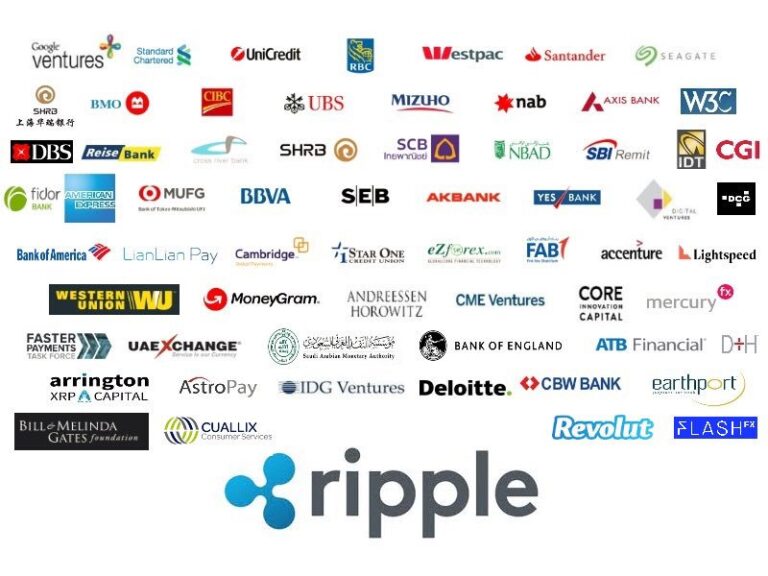The Future of Ripple
By Aidan Kalish | Crescent City Capital Market Analyst Intern

Ripple is a global payment solution that utilizes blockchain technology to process international money transfers. It offers extremely fast processing times and low transaction fees making the protocol an efficient alternative to SWIFT, the current international payment system that most banks use. The project was launched in 2012 with the name NewCoin before changing the name to OpenCoin and later on to Ripple. Ripple would go on to establish partnerships with financial institutions all over the world. In 2019 it announced that its RippleNet payment network was being used by more than 300 financial institutions in more than 45 countries.

RippleNet is the network that financial institutions use to conduct international transactions. RippleNet utilizes XRP, Ripple’s native cryptocurrency, and XRP Ledger, the decentralized public blockchain that XRP is native to. The process of how RippleNet operates is as follows: first, the transaction’s originating currency is converted to XRP on a domestic digital asset exchange and is then sent across the XRP Ledger. Once in the XRP Ledger, the transaction must go through a consensus protocol where validators come to an agreement on the order and outcome of XRP transactions. After the transaction makes it through the XRP Ledger it is then converted back to a fiat currency at an exchange in the destination country. This entire process takes 3-5 seconds to complete from end to end, making RippleNet very efficient. The transaction fee is extremely cheap at 0.00001 XRP which at the current exchange rate is equivalent to $0.0000065 USD. It is important to note that XRP is a centralized asset. Ripple has control of the cryptocurrency which is good from a confidence standpoint but also creates the issue of centralized failing meaning that XRP can fail if Ripple as a company does not perform well.
Ripple began selling XRP in 2013 to fund company operations, allowing its user to buy the cryptocurrency. At the time of writing, XRP has a market cap of $31.4 billion and a fully diluted market cap of $65.2 billion, making it the seventh largest cryptocurrency. XRP entered 2022 at $0.085 per token and has risen at the time of writing to $0.65 per token.
Although Ripple has plenty of potential, it has also had some high-profile issues. Most notably, the U.S. Securities and Exchange Commission (SEC) filed a lawsuit against Ripple at the end of 2020. The lawsuit argues that XRP has been an unregistered security since 2013 and that due to its sale of XRP, Ripple Labs Inc. has raised over $1.3 billion “through an unregistered, ongoing digital asset securities offering.” The status of the lawsuit is unclear as the SEC’s current regulatory laws are vague with the SEC using these laws as the basis of their allegations and Ripple claiming that the SEC has thin reasoning and has provided regulatory confusion due to these vague regulations. Regardless of the current state of the case and its outcome, damage has already been done to Ripple. The SEC’s lawsuit led to the delisting of XRP across the most important cryptocurrency exchanges and for the value of XRP to fall. Brad Garlinghouse, CEO of Ripple, explained that in the event that Ripple loses the case, operations outside of the U.S. would continue where Ripple serves a large customer base. Recently though the tide has seemed to turn in favor of Ripple as the SEC has opened the option to settle. A resolution to the case is expected in 2023.
Even with the ongoing lawsuit, Ripple has seen success outside of the U.S. by continuing to partner with financial institutions as well as supporting creators to kickstart NFTs on the XRP Ledger. That being said an investment in Ripple is risky as the future value of XRP will be primarily dependent on the resolution of this lawsuit. If the SEC settles the case against Ripple XRP could be in store for a large rally. On the contrary, if Ripple loses, XRP as well as most tokens trading on platforms in the U.S. would be deemed securities which means that they will be regulated by the SEC which would lead to a loss in the token’s utility and result in less opportunity for growth. The current low price of XRP could be seen as a good entry point for a bullish investor betting on an SEC settlement and an explosion in the price of the token. XRP could also be used as a hedging tool against other currencies since some factors that influence XRP are different than those impacting other cryptocurrencies. A final point to note is that XRP’s current volatility could present many short-term trading opportunities making it a good asset for day traders.
Disclaimer: Please note that the contents of this article are not financial or investing advice. The information provided in this article is the author’s opinion only and should not be considered as offering trading or investing recommendations. Please conduct your own due diligence before making any investment decisions.
References:
https://xrpl.org/xrp-ledger-overview.html
https://coinmarketcap.com/currencies/xrp/
https://www.sec.gov/news/press-release/2020-338

